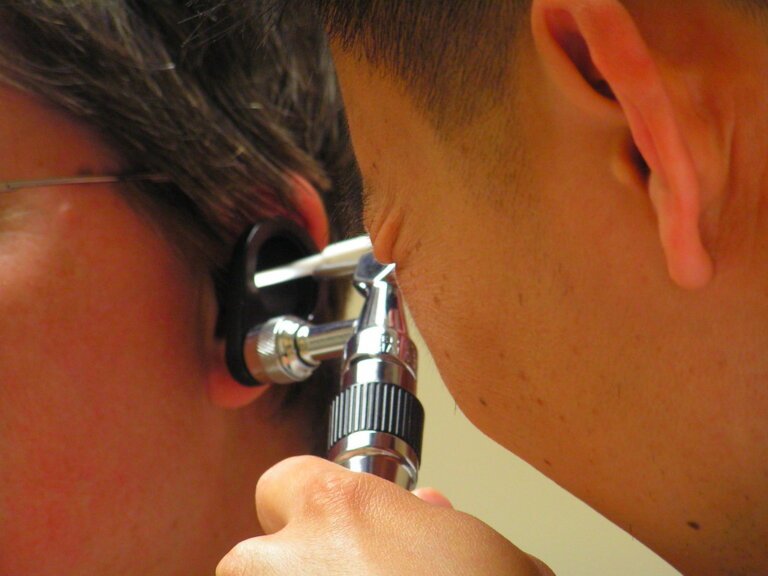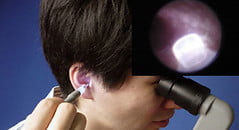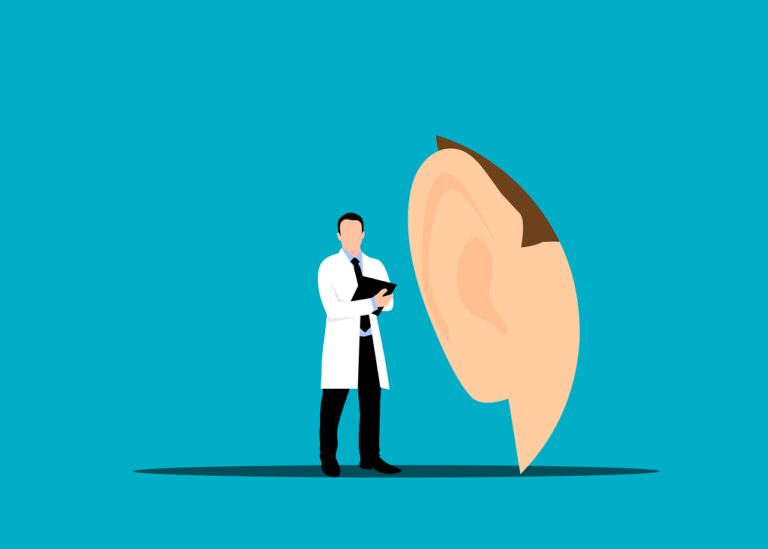The Journey to National Certification in Manual Instrument Ear Wax Removal
Last Updated on 3rd May 2024 by Admin
Ear wax, also known as cerumen, is a natural substance produced by the glands in the ear canal. Its primary function is to protect the ear from dust, bacteria, and other foreign particles. While ear wax is essential for maintaining ear health, an excessive buildup can lead to various problems, including hearing loss, tinnitus, and discomfort.
To address these issues, many individuals seek professional assistance in the form of manual instrument ear wax removal. This procedure involves the skilled use of specialized tools to safely and effectively remove excess ear wax. However, not all ear wax removal practitioners are created equal. To ensure quality care and expertise, it is crucial to look for professionals who have obtained national certification in manual instrument ear wax removal.
Understanding the Importance of National Certification
National certification serves as an essential credential, indicating that an individual has met the highest standards in their field. When it comes to manual instrument ear wax removal, national certification ensures that practitioners have undergone rigorous training, possess in-depth knowledge, and have demonstrated their proficiency in the procedure.
National certification in manual instrument ear wax removal guarantees that the practitioner has received specialized training, both in theory and practical application. This training covers various topics, including ear anatomy, ear wax management, infection control, and the safe use of manual instruments. By obtaining national certification, practitioners demonstrate their commitment to staying updated with the latest advancements and best practices in ear wax removal.
The Certification Process
Becoming nationally certified in manual instrument ear wax removal is a journey that requires dedication, commitment, and a genuine passion for ear health. Here is an overview of the steps involved in the certification process:
- Education and Training: The first step towards national certification is acquiring the necessary knowledge and skills through specialized training programs. These programs typically cover topics such as ear anatomy, ear wax management, infection control, and the safe use of manual instruments.
Specialized training programs provide aspiring practitioners with a comprehensive understanding of the ear and its intricate structures. They learn about the different types of ear wax and the best techniques for its removal. Additionally, training programs emphasize the importance of infection control, ensuring that practitioners follow proper sanitation protocols to prevent the spread of bacteria or other contaminants.
- Hands-on Experience: Following the completion of the training program, aspiring practitioners are required to gain practical experience under the guidance of experienced professionals. This hands-on experience allows them to apply their theoretical knowledge in real-world scenarios and develop essential skills.
Hands-on experience is crucial for practitioners to become proficient in manual instrument ear wax removal. Under the supervision of experienced professionals, they learn how to handle specialized tools with precision and care. This practical experience also helps them understand the unique characteristics of each patient’s ear and tailor the removal technique accordingly.
- National Certification Exam: Once the education and hands-on experience requirements are met, individuals are eligible to take the national certification exam. This exam assesses their knowledge, technical proficiency, and ability to provide safe and effective manual instrument ear wax removal. Successful completion of the exam is a critical milestone on the journey to national certification.
The national certification exam evaluates the practitioner’s understanding of ear anatomy, infection control measures, and their aptitude for performing manual instrument ear wax removal. It tests their ability to handle various scenarios and make informed decisions to ensure patient safety. By passing this exam, practitioners demonstrate their competence and readiness to provide high-quality care.
- Continuing Education: National certification is not a one-time achievement but rather a commitment to ongoing professional development. Certified practitioners are required to participate in regular continuing education programs, ensuring they stay up-to-date with the latest advancements and best practices in ear wax removal.
Continuing education plays a vital role in maintaining the practitioner’s knowledge and skillset. It allows them to stay informed about emerging research, technological advancements, and updated guidelines in the field of manual instrument ear wax removal. By participating in continuing education programs, practitioners can continually enhance their expertise and provide the best possible care to their patients.
Benefits of Choosing a Nationally Certified Practitioner
Opting for a nationally certified practitioner in manual instrument ear wax removal offers numerous advantages, including:
- Expertise: National certification guarantees that the practitioner possesses the necessary knowledge, skills, and training to perform the procedure with precision and care. Their expertise ensures a safe and effective ear wax removal experience.
Nationally certified practitioners have undergone extensive training and demonstrated their proficiency in manual instrument ear wax removal. They have a deep understanding of the ear’s anatomy, different types of ear wax, and the appropriate techniques for removal. Their expertise allows them to handle various ear wax-related issues effectively.
- Quality Assurance: Choosing a nationally certified practitioner provides peace of mind, as it signifies adherence to industry standards and best practices. These professionals are committed to providing high-quality care and maintaining the highest level of professionalism.
National certification sets a standard of excellence in the field of manual instrument ear wax removal. By choosing a certified practitioner, patients can trust that they will receive care that meets or exceeds industry standards. These practitioners follow strict guidelines and protocols to ensure the highest quality of service.
- Safety: Manual instrument ear wax removal requires delicate handling and precise techniques to avoid injury or damage to the ear. By choosing a nationally certified practitioner, you can be confident in their ability to perform the procedure safely, minimizing any potential risks.
Nationally certified practitioners have undergone extensive training and practical experience, equipping them with the necessary skills to prioritize patient safety. They understand the delicate nature of the ear and employ techniques that minimize the risk of injury or discomfort during the removal process.
- Patient-Centric Approach: Nationally certified practitioners prioritize patient care and satisfaction. They take the time to understand individual needs, address concerns, and provide personalized care throughout the ear wax removal process.
Nationally certified practitioners recognize that each patient is unique and may have specific concerns or requirements. They adopt a patient-centric approach, actively listening to their patients and tailoring the treatment to meet their individual needs. This personalized care ensures a positive and comfortable experience for patients.
- Continuity of Care: By choosing a nationally certified practitioner, you can establish a long-term relationship built on trust and mutual understanding. This ensures continuity of care, enabling the practitioner to monitor and manage your ear health effectively.
Developing a long-term relationship with a nationally certified practitioner allows for ongoing monitoring and management of ear health. They can track any changes or recurring issues, providing timely interventions and preventive measures. This continuity of care contributes to maintaining optimal ear health and overall well-being.
Conclusion
Seeking national certification in manual instrument ear wax removal is a testament to a practitioner’s dedication, commitment, and expertise. By choosing a nationally certified practitioner, you can be confident in receiving high-quality care, ensuring the safe and effective removal of excess ear wax. Remember to prioritize your ear health and make informed decisions when seeking professional assistance.
FAQ
1. What is the importance of national certification in manual instrument ear wax removal?
National certification ensures that practitioners have undergone rigorous training, possess in-depth knowledge, and have demonstrated their proficiency in the procedure. It guarantees that the practitioner has received specialized training in ear anatomy, ear wax management, infection control, and the safe use of manual instruments.
2. What is the certification process for manual instrument ear wax removal?
The certification process involves education and training, hands-on experience, a national certification exam, and continuing education. Aspiring practitioners acquire knowledge and skills through specialized training programs, gain practical experience under the guidance of experienced professionals, and then become eligible to take the national certification exam. Certified practitioners are required to participate in regular continuing education programs to stay updated with advancements and best practices.
3. What are the benefits of choosing a nationally certified practitioner for ear wax removal?
Choosing a nationally certified practitioner offers several benefits, including expertise, quality assurance, safety, a patient-centric approach, and continuity of care. Certified practitioners have extensive training and understanding of ear anatomy, different types of ear wax, and removal techniques. They adhere to industry standards, prioritize patient safety, provide personalized care, and establish long-term relationships for ongoing monitoring and management of ear health.
4. Why should I prioritize my ear health and make informed decisions when seeking professional assistance?
Prioritizing ear health and making informed decisions ensures that you receive high-quality care and safe removal of excess ear wax. Professional assistance from a nationally certified practitioner guarantees expertise, adherence to industry standards, safety, personalized care, and continuity of care. Taking care of your ear health can prevent problems such as hearing loss, tinnitus, and discomfort associated with excessive ear wax buildup.







